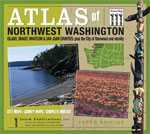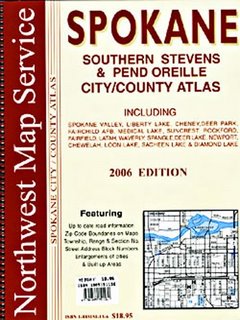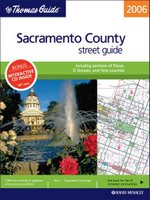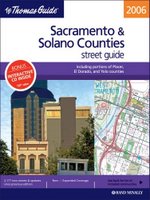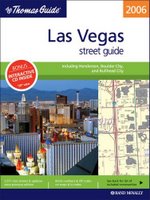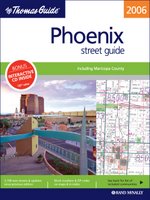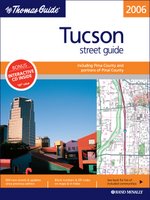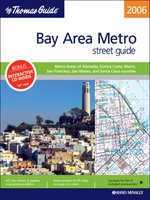Here is an article from the Press Enterprise in case you missed it!
Inland-area growth tests mapmakers: 2,700 Streets: Crews hit the road to verify recent updates and keep an eye out for future ones.
02:07 AM PDT on Tuesday, July 5, 2005
By DAN LEE / The Press-Enterprise
Related
Navteq Web site
Mapquest Web site
Patricia Jones and Greg Doughty looked around carefully as they drove across Alessandro Boulevard into Riverside from Moreno Valley.
Wearing a headset with a microphone, Jones held the steering wheel with her left hand and a recording device shaped like a video-game controller in her lap with her right hand. Doughty took notes on a pen tablet connected to a laptop computer with a Global Positioning System unit.
NEW STREETS The number of new streets, on average, that
Thomas Guide is adding to its maps each year:
Riverside County: 2,000
San Bernardino County: 700 to 800
Orange and Los Angeles counties: 400 to 600
Source:
Rand McNally Jones turned right onto Sycamore Canyon Boulevard and spied a network of industrial buildings on the west side of Interstate 215.
"This all looks new here," she said.
Jones and Doughty update street and landmark information for Navteq North America LLC, a mapping company that -- like local pizza parlors, police officers, firefighters, letter carriers and delivery services -- is trying to keep up with the Inland area's explosive growth.
The populations of 27 Inland communities have grown at a double-digit pace during the past five years, with Murrieta nearly doubling its population in that time, according to state Department of Finance statistics. That means more new homes and more new streets that businesses and public-safety agencies have to map and identify.
"We are putting in more time in making maps for the two counties,"
Rand McNally Vice President Nancy Yoho said by phone.
Rand McNally, which publishes the
Thomas Guide map books, has added an average of 2,000 streets per year in Riverside County over the past four years, she said. Meanwhile, San Bernardino County is adding about 700 to 800 new streets a year, Yoho said.
Carrie Rosema / The Press-Enterprise
Mark Kepler knows his way around his new Riverside neighborhood, but delivery people still don't. "Even the gas man got lost," he said.
By contrast, the number of streets in Los Angeles and Orange counties grows by 400 to 600 a year, Yoho said.
Mark Kepler is one of several homeowners in a new Riverside neighborhood who described early struggles in directing pizza deliveries, utility workers and others to their recently built Orangecrest homes.
"That's been a major hassle," said Kepler, 29. "You definitely can't order out unless they are calling you every two or three blocks for directions. Even the gas man got lost."
Neighbor Charles Monroe said when he called the Riverside police last week to report a swarm of bees in his back yard, the dispatcher asked for his cross street. A county crew sent to take care of the stinging insects had trouble finding the new house.
"I had to talk them in," said Monroe, 52, describing how the crew trying to locate the home called him by cellular telephone for help.
Public Safety Police officers, firefighters and ambulance-service providers are continually updating their maps, because they know that lives can be lost if they are unable to find a house.
In fast-growing High Desert city of Apple Valley in San Bernardino County, for example, the Apple Valley Fire Protection District is among the agencies that helps review and approve tract maps, giving fire officials early access to the plans.
The information is loaded into the fire department's computerized mapping program, allowing updates to be made in the
map books carried in each fire engine.
"I normally have the (new) map pages in the books before they break ground," Division Chief Art Bishop said.
The American Medical Response ambulance company has its own computer-aided dispatch system that is regularly updated by
Thomas Guide maps, said Bruce Barton, the company's Riverside County operations director.
"If we get into a response where we don't have good information, we will communicate with the local public (safety) agency and get advance instructions," Barton said by phone.
The ambulance crews also regularly spend time familiarizing themselves with the area, Barton said.
Mail and Shipping The U.S. Postal Service reviews new street names to ensure that they aren't too similar to those of existing streets, Moreno Valley Postmaster Pete Weaver said by phone.
"Then we plan for the number of deliveries that development is going to require," he said.
Every route has a number of delivery points, Weaver said. An apartment complex that has a mailbox area would be a single delivery point, he explained.
Most new housing tracts put multiple mailboxes in one curbside spot, Weaver said. Moreno Valley has added 3,799 delivery points since the same period last year, he said.
That's the equivalent of nearly seven new routes, Postal Service spokesman Mike Cannone said by phone. Ordinarily, a post office picks up a new route every one or two years, he said.
Murrieta has added 3,541 delivery points in the past year, while Temecula has slowed down, adding only 525 new delivery points, Cannone said.
"That was our biggest growth area," he said.
Apple Valley in San Bernardino County added 478 delivery points, but Victorville and Fontana each gained more than 1,000, Cannone said.
Delivery companies such as United Parcel Service get their information on new streets from their drivers.
"The minute they see a housing tract going in, they make contact with the developer, and they get maps of the new streets," Rich Day, UPS' Ontario-based spokesman, said by phone.
UPS drivers also have computerized clipboards with GPS technology that have information on their delivery stops, he said.
"Their whole dispatch is downloaded into their board. Here are how many stops they have today. Here are the addresses," Day said. "Run it on the board, and they should have no problem ... (the stops) will fall in one after the other."
Thomas Guide vs. Mapquest
Rand McNally relies on new tract maps filed with local agencies, and updated information on new parks, schools, hospitals and fire stations and revised city boundaries comes from other local officials, she said.
Although the company has not hired more staff, its team of 60 cartographers is working additional hours to keep up with the rapid changes in Riverside and San Bernardino counties, Yoho said.
In today's digital age, more people are making use of Internet map services such as Mapquest to find places and get directions. But Mapquest itself relies on companies such as Navteq, which collect and sell the information, company spokesman Brian Hoyt said by phone.
Jones and Doughty drive out from their Upland office across the Inland area, taking notes on everything from speed limits and block numbers to how many lanes a street has and whether U-turns are permitted. The information helps calculate travel times, directions and distances for clients such as Mapquest, Jones said.
One difference between
Thomas Guide and Mapquest:
Thomas Guide's map books are published only once a year, Yoho said; Mapquest may get information updates twice a year, according to Hoyt.
Still, Yoho said she isn't worried about Internet services like Mapquest cutting into
Rand McNally's business.
Real estate firms, delivery services and public-safety agencies still rely on
Thomas Guide's map books, she said.
"From the things I've also heard, the Internet isn't all that reliable," Yoho said. "People will tell me, 'It's led me in the wrong direction or the long way around.' "
Mapquest's Hoyt said mistakes happen, but they are rare.
Nicholas Batshon, owner of Papa Joe's Pizza in Moreno Valley, said his employees use Mapquest to find delivery addresses and have never had a problem. If all else fails, they call the customer for directions, he said.
Dave Hoover owns Lorenzo's Pizza, another Moreno Valley restaurant. The pizza parlor makes 50 to 100 deliveries a day, and the delivery drivers generally rely on the
Thomas Guide's maps, he said.
The drivers rely on their own knowledge if the
Thomas guides aren't up-to-date, Hoover added.
Most of the drivers grew up in the area, he said, "so they know where it's probably at."
Staff writers Mike Fisher and Richard Brooks contributed to this report








